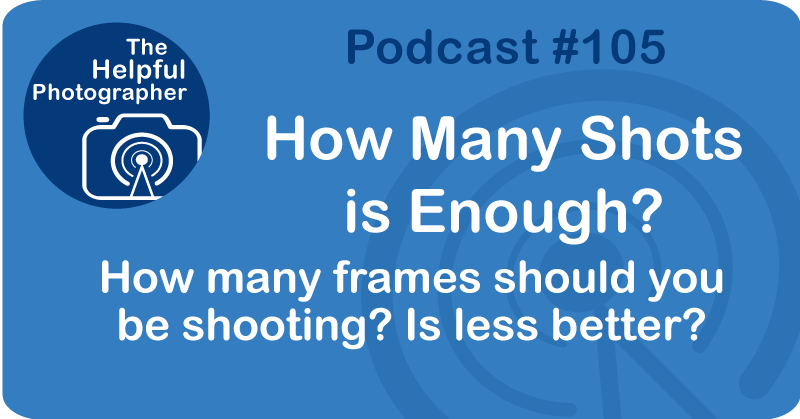How Many Shots is Enough? #105
Using Graduated ND Filters #105

On a recent trip to Vietnam, I was complaining to my group that none of them were taking enough photos. For the most part, they were only shooting 2 or 3 frames for any particular shot. To some extent, this is fine, but to another extent, this was not even close to enough. Let's be clear, I'm not saying you should shoot indiscriminately. What I'm saying is that if you want to grow your photography, you have to experiment more, and you need to try different angles. Consider shooting more frames as a way to sketch.
Artists sketch dozens of images to plan their final painting. By trying different angles, you are essentially sketching to find that perfect shot. Another thing to do is when you take a shot, don't put the camera down to review the image after you push the button. Keep your eye on the viewfinder and double check your shot. Look at the edges, make sure you have what you want before you put the camera down. If you're shooting things that are moving, you need to shoot even more frames to make sure that you have what you need. And again, I'm not saying you should spray and pray. You should most definitely take your time, but take more frames. Here's an example: during that Vietnam trip, we stopped along a road near some rice fields when I saw some people working in the fields. The shot that I'd been looking for, for nearly six years is that person who is wearing one of those conical hats with the pole across their shoulder and that basket hanging on each side. While we were shooting on the side of the road, a woman walks across from one field to another with exactly that. The hat, the baskets, the whole thing. I was dying. And just before I could get the shot, she put her stuff down. Man was that frustrating. So I decided to walk over and ask if she wouldn't mind posing for us and walking along the rice fields with her baskets. But before I asked her, I told my guys to get ready for the shot. And I didn't ask the woman to start walking until I got the thumbs up from everyone.
And so she walked. She walked right in front of us with the rice fields in the background and in the foreground. She walked back and forth three times, which meant we had six chances to get the perfect shot. I knew that the shot I wanted was just as she took a step and not when her feet were together, so that it looked like she was in motion. So every time this happened, I would fire three or four frames. When we got back into the van, I asked the group to look through their images and to report how many photos they had taken. The lowest number in the group was 16 frames. The highest number was 36. Me, I shot 93 frames and nearly 70 of those images had her feet exactly in the position I wanted. And they were sharp. Although at the end of the day, you only need one. I have more shots to choose from and a much higher likelihood of actually having something that works. One of the things that happened while I was shooting was I saw that her basket of green seedlings were not really visible against the background. But if I simply stood a little higher instead of kneeling, I could get them to offset against a darker background. And as a result, they were glowing because of it. And it is because I kept on firing and studying my shot as it was happening, that I was able to detect the problem and fix it before it went away. So shoot more, not less, but pay attention to the whole frame.
After we got back, one of the participants called me and told me that the next pro that took him out for a shoot was really confused as to why he was shooting so many frames. I am aware that the internet says that you should shoot fewer frames. But I have a hard time with this thinking because if you don't practice, then how do you improve? But again, I say this with caution. When I was first learning martial arts, I remember the group that I was working out with had us do 600 kicks in one evening. Looking back, this didn't make any sense to me.
because no one corrected my form during those 600 kicks. And since I was a beginning student, it meant that I was quickly creating muscle memory for bad, ineffective kicks. To me, this is akin to spraying and praying; it generally doesn't work. The key to growing as a photographer is to study your images and your subject so that you can see where the good images are, so that you can get to the image over and over and over again and quicker.
In time, you will find that the ratio of good to bad images will get higher and higher. Let me say it one last time. I think you should shoot more, but it should not be indiscriminate. I hope that was helpful. Until next time, keep on shooting!











